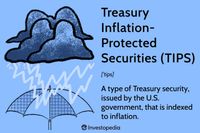Explorez les résultats de recherche web liés à ce domaine.
They take a shorter time—say, ... add to a portfolio. Investing, then, is more like a marriage, involving long-term decisions—six months or longer—based on criteria that matter deeply to each trader's profile. Remember, you're seeking a long-term trend or partner. ... Today often kicks off the Santa Claus rally. Stocks rose and ...
They take a shorter time—say, three to six months—to audition various candidates to add to a portfolio. Investing, then, is more like a marriage, involving long-term decisions—six months or longer—based on criteria that matter deeply to each trader's profile. Remember, you're seeking a long-term trend or partner. ... Today often kicks off the Santa Claus rally. Stocks rose and volatility is down sharply from recent peaks, but yields keep rising, which has hurt the non-tech part of the market.Looking for stock tips for beginners? These five tips can help you refine your investment strategies and take advantage of stock investment tools.Starting to invest? Tips for beginners can help you start to fine-tune your investment strategies and take advantage of stock investment tools.That old maxim certainly applies to investing or trading in stocks. Do you consider yourself a stock market newcomer? Here's one way to think about stocks for beginners: Don't think of yourself as a beginner at all. That's because when learning how to trade stocks, you may be your own best research director, money manager, and market expert. Is "now" the time to start trading stocks?


A human financial advisor can design a stock portfolio and help with other wealth-planning moves such as saving for college. A human advisor typically charges a per-hour fee or around 1 percent of your assets annually, with a high investment minimum. One big advantage: a good human advisor can help you stick to your financial plan. Here are six tips ...
A human financial advisor can design a stock portfolio and help with other wealth-planning moves such as saving for college. A human advisor typically charges a per-hour fee or around 1 percent of your assets annually, with a high investment minimum. One big advantage: a good human advisor can help you stick to your financial plan. Here are six tips for finding the best advisor – and what you need to watch out for.Here are three important tips on how to invest in stocks for beginners: While Hollywood portrays investors as active traders, you can succeed – and even beat most professional investors – by using a passive buy-and-hold approach. One strategy: Regularly buy an S&P 500 index fund containing America’s largest companies and hold on. It can be valuable to track your portfolio, but be careful when the market dips.So how exactly do you invest in stock? It’s actually simple and there are several ways to do it. One of the easiest ways is to open an online brokerage account and buy stocks or stock funds. If you’re not comfortable with that, you can work with a professional to manage your portfolio, often for a reasonable fee.All you’ll need to do is add money to the account, and the robo-advisor will create your portfolio. If you’re using a brokerage, you’ll have to select every investment and make trading decisions. You can invest in individual stocks or stock funds, which typically own hundreds of stocks.
Funds, such as index funds, exchange-traded funds and mutual funds are baskets of individual stocks grouped together. Funds let you invest in lots of stocks at once. That means if one of the stocks in your fund goes out of business your portfolio likely won't tank.
The best brokers for beginners offer a combination of low costs, helpful educational content and a broad investment selection. Our testers also look for trading platforms that are easy to navigate and flexible as you grow your skills and excellent customer support. ... Stock research can help you evaluate a company and decide whether it's worth adding to your portfolio.Buying stocks isn’t hard. What’s challenging is choosing companies that consistently beat the stock market. That’s something most people can’t do, which is why you’re on the hunt for stock tips.…Here are seven stock tips that might actually help you build wealth over the long-term. ... If you're nervous about putting your hard-earned dollars in the market you can try it out with fake money first. Paper trading allows you to practice investing without risking your cash.These stock market tips will help you understand how to invest wisely and learn how to build long-term wealth.

We sell TIPS for a term of 5, 10, or 30 years · As the name implies, TIPS are set up to protect you against inflation
We sell TIPS for a term of 5, 10, or 30 years.As the name implies, TIPS are set up to protect you against inflation.Unlike other Treasury securities, where the principal is fixed, the principal of a TIPS can go up or down over its term.When the TIPS matures, if the principal is higher than the original amount, you get the increased amount.
Funds, such as index funds, exchange-traded funds and mutual funds are baskets of individual stocks grouped together. Funds let you invest in lots of stocks at once. That means if one of the stocks in your fund goes out of business your portfolio likely won't tank.
The best brokers for beginners offer a combination of low costs, helpful educational content and a broad investment selection. Our testers also look for trading platforms that are easy to navigate and flexible as you grow your skills and excellent customer support. ... Stock research can help you evaluate a company and decide whether it's worth adding to your portfolio.Buying stocks isn’t hard. What’s challenging is choosing companies that consistently beat the stock market. That’s something most people can’t do, which is why you’re on the hunt for stock tips.…Here are seven stock tips that might actually help you build wealth over the long-term. ... If you're nervous about putting your hard-earned dollars in the market you can try it out with fake money first. Paper trading allows you to practice investing without risking your cash.These stock market tips will help you understand how to invest wisely and learn how to build long-term wealth.


The principal amount is protected ... invested principal. ... The principal value of TIPS rises as inflation rises. Inflation is the pace at which prices increase throughout the U.S. economy, as measured by the Consumer Price Index (CPI). Inflation becomes an issue when there isn’t a commensurate rise in real wage growth to offset the negative effects of rising prices. TIPS are a popular asset for protecting portfolios from inflation ...
The principal amount is protected since investors will never receive less than the originally invested principal. ... The principal value of TIPS rises as inflation rises. Inflation is the pace at which prices increase throughout the U.S. economy, as measured by the Consumer Price Index (CPI). Inflation becomes an issue when there isn’t a commensurate rise in real wage growth to offset the negative effects of rising prices. TIPS are a popular asset for protecting portfolios from inflation and profiting from it because they pay interest every six months based on a fixed rate determined at the bond’s auction.Diversification: Including TIPS in an investment portfolio can enhance portfolio diversification. Though the correlation between investments is always shifting, TIPS can perform differently from other asset classes that may act negatively towards rising prices and inflation.Treasury Inflation-Protected Securities (TIPS) are bonds that offset the effects of inflation by adjusting the value of the principal.You can also buy TIPS directly from your bank or broker. This may be more convenient for those investors who already have a substantial portfolio of securities at a certain financial institution.

A diversified portfolio minimizes risks while investing for the long term. It allows for a certain amount of high-return investments by offsetting possible risks through more stable alternatives. · When you start early, you can also learn the value of disciplined saving and plan for your life goals. You can start with a mix of cash, stocks...
A diversified portfolio minimizes risks while investing for the long term. It allows for a certain amount of high-return investments by offsetting possible risks through more stable alternatives. · When you start early, you can also learn the value of disciplined saving and plan for your life goals. You can start with a mix of cash, stocks, bonds, or government securities.Broadly speaking, there are two basic types of investment – stocks and bonds. While stocks are seen as high-risk with high returns, bonds are usually more stable with lower returns. You should divide your money between these two options to minimize risk exposure. The trick lies in balancing the two and finding an equilibrium between risk and surety. · Asset distribution is typically based on age and lifestyle. At a younger age, you can take a risk on your portfolio, opting for stocks that offer high returns.A good way of allocation is to subtract your age from 100 – this should be the percentage of stocks in your portfolio. For example, a 30-year-old could keep 70% in stocks with 30% in bonds. On the other hand, a 60-year-old should reduce risk exposure. Hence, the stock-to-bond allocation should be 40:60. However, you may have to factor in your family finances when making these decisions. · If you share a high proportion of the family expenses, you should be more cautious about your investments.What makes a g-sec secure is its insulation from market fluctuations, but this also removes the likelihood of making a substantial gain, as in the case of stocks. You can invest in g-secs if you want to park your money in a safe place for the short term. You can also use it as a part of your portfolio to offset against other ‘riskier’ investments, such as high-value, high-risk stocks.
These are great tips for beginners who have yet to manage their emotions when investing. “Some of the news cycle, at times it becomes 100 percent negative and it can become overwhelming for people,” Keady says. One strategy for beginners is to set up a calendar and predetermine when you’ll be evaluating your portfolio. Sticking to this guideline will prevent you from selling out of a stock ...
These are great tips for beginners who have yet to manage their emotions when investing. “Some of the news cycle, at times it becomes 100 percent negative and it can become overwhelming for people,” Keady says. One strategy for beginners is to set up a calendar and predetermine when you’ll be evaluating your portfolio. Sticking to this guideline will prevent you from selling out of a stock during some volatility – or not getting the full benefit of a well-performing investment, Keady says.The stock market consists of all the stocks that can be bought and sold by the general public on a variety of different exchanges. Making the right investment is a key aspect of investing, but continuing to hold a well-diversified portfolio can help increase your returns over time.The hardest issue for most investors is stomaching a loss in their investments. And because the stock market can fluctuate, you will have losses occur from time to time. You’ll have to steel yourself to handle these losses, or you’ll be apt to buy high and sell low during a panic. As long as you diversify your portfolio, any single stock that you own shouldn’t have too much of an impact on your overall return.Investing in individual stocks isn’t for everybody. Here’s what you need to know about the stock market before you start investing.

Index funds and ETFs are a kind ... that index by buying the stock of the companies in it. When you invest in a fund, you also own small pieces of each of those companies. You can put several funds together to build a diversified portfolio....
Index funds and ETFs are a kind of mutual fund that track an index; for example, a S&P 500 fund replicates that index by buying the stock of the companies in it. When you invest in a fund, you also own small pieces of each of those companies. You can put several funds together to build a diversified portfolio.If you’re after a specific company, you can buy a single share or a few shares as a way to dip your toe into the stock-trading waters. Building a diversified portfolio out of many individual stocks is possible, but it takes a significant investment and research.The upside of stock mutual funds is that they are inherently diversified, which reduces your risk. For the vast majority of investors — particularly those who are investing their retirement savings — a portfolio made up of mostly mutual funds is the clear choice.Mutual funds often have minimums of $1,000 or more, but ETFs trade like a stock, which means you purchase them for a share price — in some cases, less than $100). If you’re investing through funds — have we mentioned this is the preference of most financial advisors? — you can allocate a fairly large portion of your portfolio toward stock funds, especially if you have a long time horizon.

Instead, successful long-term investors ... their portfolios over years or decades. Some investors lock in profits by selling their appreciated investments while holding onto underperforming stocks they hope will rebound. But good stocks can climb further, and poor stocks risk zeroing out completely. Below, we provide 10 tips for successful ...
Instead, successful long-term investors focus on time-tested strategies that help them weather market volatility while growing their portfolios over years or decades. Some investors lock in profits by selling their appreciated investments while holding onto underperforming stocks they hope will rebound. But good stocks can climb further, and poor stocks risk zeroing out completely. Below, we provide 10 tips for successful long-term investing that can help you prevent mistakes while positioning yourself to generate profits.Long-term investing success relies more on disciplined strategy than finding "hot" stocks or timing market swings · Successful investors typically hold their winners longer while being willing to cut losses on underperforming investments · Research shows investors who stay invested through market cycles with diversified portfolios have the highest probability of positive returnsThere's no guarantee a declining stock will recover and that money could be better invested elsewhere. Many great companies are household names, but many good investments lack brand awareness. Furthermore, thousands of smaller companies can become the blue-chip names of tomorrow. This is not to suggest that you should devote your entire portfolio to small-cap stocks, but there are many great companies beyond those in the Dow Jones Industrial Average.Avoid common investing mistakes with these guiding principles.
:max_bytes(150000):strip_icc()/GettyImages-1053748996-3339424d09ab4c37aa7106658d54cd93.jpg)

These are great tips for beginners who have yet to manage their emotions when investing. “Some of the news cycle, at times it becomes 100 percent negative and it can become overwhelming for people,” Keady says. One strategy for beginners is to set up a calendar and predetermine when you’ll be evaluating your portfolio. Sticking to this guideline will prevent you from selling out of a stock ...
These are great tips for beginners who have yet to manage their emotions when investing. “Some of the news cycle, at times it becomes 100 percent negative and it can become overwhelming for people,” Keady says. One strategy for beginners is to set up a calendar and predetermine when you’ll be evaluating your portfolio. Sticking to this guideline will prevent you from selling out of a stock during some volatility – or not getting the full benefit of a well-performing investment, Keady says.The stock market consists of all the stocks that can be bought and sold by the general public on a variety of different exchanges. Making the right investment is a key aspect of investing, but continuing to hold a well-diversified portfolio can help increase your returns over time.The hardest issue for most investors is stomaching a loss in their investments. And because the stock market can fluctuate, you will have losses occur from time to time. You’ll have to steel yourself to handle these losses, or you’ll be apt to buy high and sell low during a panic. As long as you diversify your portfolio, any single stock that you own shouldn’t have too much of an impact on your overall return.Investing in individual stocks isn’t for everybody. Here’s what you need to know about the stock market before you start investing.
Everything you need to know about starting to invest in stocks including what makes for great beginner stocks in your starter portfolio.
If you're ready to start investing in the stock market but aren't sure which stocks to choose, you've come to the right place. There are a few characteristics of stocks that are good for beginners, as well as some practices beginners should specifically avoid when selecting the first companies for their portfolios.The last thing we need to cover is what you should avoid as a beginning investor. Investing in the wrong type of stock can make your portfolio's value look like a roller coaster and can even cause you to lose your entire investment.Rapidly growing companies: This is especially true when it comes to companies that have yet to turn a profit. Growth investing can be a great way to build wealth, but it can be volatile. It's a good idea to wait until you've built up a base for your portfolio and understand stocks better before you try to invest in the next big thing.Absolutely! With the emergence of commission-free trades and fractional share investing, it's possible to start investing in stocks with just a few dollars. In fact, if your broker or investment app offers fractional shares, you can build a diverse stock portfolio with just $100.

One reason young people don't invest ... stocks or basic concepts such as diversification and the power of compounding. But it's not hard to learn. There are many sources of investing information, such as this website. Moreover, the earlier you start, the more time you have to build your wealth and ride out bear markets and periods of high volatility. Because of this, young people should get a leg up on portfolio ...
One reason young people don't invest is they fail to understand stocks or basic concepts such as diversification and the power of compounding. But it's not hard to learn. There are many sources of investing information, such as this website. Moreover, the earlier you start, the more time you have to build your wealth and ride out bear markets and periods of high volatility. Because of this, young people should get a leg up on portfolio management.Instead, seek out a wide range of stocks from different industries, and also diversify across different asset classes beyond stocks, such as bonds, real estate, commodities, and even a small allocation to cryptocurrency. Holding a variety of securities across different asset classes can help balance out the risks and returns of the portfolio, and help mitigate the impact of market downturns on any one particular investment or group of investments.In general, a more aggressive risk tolerance will feature a greater allocation to stocks, while a more conservative portfolio will hold relatively more bonds and cash (see the example Figures below) Once you have selected your assets, monitoring and adjusting your portfolio periodically is important. This involves rebalancing your portfolio to align with your investment goals and risk tolerance.Another way to diversify your portfolio is by investing in a mix of small, medium, and large companies. Often, larger companies have already succeeded, while smaller companies may be seen as more risky. However, smaller companies can also have greater potential for growth, which can help balance out the portfolio's overall risk. For instance, stocks may falter during an economic downturn while bonds and gold might perform better.
:max_bytes(150000):strip_icc()/portfoliomanagement_final_definition_0819-06ea364da93a467b8fe62eb1965f3559.png)

But how many stocks does a diversified portfolio require? According to Andrew Crowell, a financial advisor and vice chairman of wealth management at D.A. Davidson, stock investors should own at least five to 10 different positions, and any one position shouldn't account for more than 10% to ...
But how many stocks does a diversified portfolio require? According to Andrew Crowell, a financial advisor and vice chairman of wealth management at D.A. Davidson, stock investors should own at least five to 10 different positions, and any one position shouldn't account for more than 10% to 20% of the total portfolio.If you're a young, swing-for-the-fences investor who wants to amass a multimillion-dollar stock portfolio by the time you're 40, you've just narrowed your universe down to high-risk, high-reward names – likely out-and-out growth stocks or beaten-down contrarian names.If you have a shorter runway, and simply desire to play it safe and maybe earn a little income while you're at it, you'll likely only want to consider blue-chip companies and dividend stocks. And for those aiming to be short-term momentum investors or trade based on charts, your aims are beyond the purview of this piece. The bottom line: Having even a loose idea of your investing goals will be a big help in culling down that list of 8,000 choices to the securities that make sense for your portfolio.This is in large part due to the cyclical nature of the economy and stock market. Contractions are inevitable, and they don't mean you need to abandon all investments along with your hope for retirement. "Instead of panicking during a downturn, thoughtful investors should review their holdings and potentially add to or rebalance their portfolio," Crowell says.

Learn how to start investing in the stock market, from opening a brokerage account to choosing stocks, and managing your portfolio.
Determining exactly how to pick stocks can feel overwhelming, but it can be helpful to remember that when you buy stock. · The best place to start is the company's annual report, formally known as Form 10-K, which provides a comprehensive overview of its financials as well as a letter to shareholders. · Here are a few more tips to keep in mind when building your portfolio:Whether you're looking to contribute a large chunk of your savings or simply dip your toes in the proverbial investment waters, here is some crucial information you need to buy stocks and diversify your portfolio.Limit orders give investors more control over the price they pay for a security. Just be careful with limit orders, because some brokers charge more for these more technical, complex trades. To place your stock order, navigate to the section of your brokerage's platform and punch in the necessary information. Once you place your order, your portfolio will immediately update to reflect your newly purchased shares.Keep in mind that the stock market can be quite volatile, so you can save yourself a lot of time (and stress) by looking at your portfolio every now and then instead of reviewing it on a daily basis. · You might want to evaluate your portfolio once a quarter, or once a year, for example. One good way to measure the performance of a portfolio is to compare it to a benchmark index like the S&P 500 or the Dow Jones Industrial Average. · Investing in stocks can provide many benefits, such as:

Returns as of 12/26/2024. Stock Advisor launched in February 2002. ... Meet the Magnificent Vanguard ETF With 37.6% of Its Portfolio Invested in Nvidia, Apple, and Microsoft
Here are 10 stocks that could be excellent additions to your portfolio for the rest of 2024 and for years to come. ... Learn how you can make money investing in the wave of seasoned companies innovating in AI.Here's a guide on what you need to do to get started with stock investing. ... The continued legalization of marijuana means growth for companies in this sector. ... Exchange-traded funds tend to be less volatile than individual stocks and provide portfolio diversification.The home plate for individual investors, backed by additional stock recommendations, quant analytics, and a toolkit to supercharge your investing journey. ... Intentional mix of growth, dividend, and under-the-radar stocks, as well as proprietary tools offering deeper analytics, research, and insights into constructing an optimized portfolio.Invest better with The Motley Fool. Get stock recommendations, portfolio guidance, and more from The Motley Fool's premium services.
One way to mitigate risk is to diversify your investment portfolio by spreading your money over various regions and investment types. ... We’ll find a professional perfectly matched to your needs. Getting started is easy, fast and free.Find a financial adviser · If you open a stocks and shares ...
One way to mitigate risk is to diversify your investment portfolio by spreading your money over various regions and investment types. ... We’ll find a professional perfectly matched to your needs. Getting started is easy, fast and free.Find a financial adviser · If you open a stocks and shares ISA, you can pay up to £20,000 a year and not pay tax on income or capital gains from investments.Connecting you with the UK’s biggest selection of financial advisers, mortgage brokers, accountants & bookkeepers, we’ve connected millions with the unbiased advice they need.This article reveals 10 top investment tips for beginners, including the importance of diversification and reviewing your investments regularly.Investing can be a great way to build your wealth and achieve your financial goals, but it’s essential to take a considered approach. By doing your research, diversifying your portfolio, and reviewing your investments regularly, you can better navigate the ups and downs of the market and make informed decisions.

If you’re a younger investor, ... to TIPS. There are two reasons. First, human capital—or the present value of all the earnings you’re going to generate during your lifetime—is likely your largest asset. Because wages normally increase over time to keep up with inflation, this human capital provides a built-in hedge against higher prices for goods and services. Second, your investment portfolio is probably heavily weighted toward stocks, which are ...
If you’re a younger investor, you may not need any exposure to TIPS. There are two reasons. First, human capital—or the present value of all the earnings you’re going to generate during your lifetime—is likely your largest asset. Because wages normally increase over time to keep up with inflation, this human capital provides a built-in hedge against higher prices for goods and services. Second, your investment portfolio is probably heavily weighted toward stocks, which are one of the best ways to offset long-term inflation risk.[1] This site has a helpful tool for investors interested in constructing a TIPS ladder. The author or authors do not own shares in any securities mentioned in this article. Find out about Morningstar’s editorial policies. ... Here are some of the key takeaways from Morningstar’s annual retirement-income research. ... This portfolio strategy proved once again in 2024 that it’s not dead yet. ... Even in a richly priced market for US stocks, there are opportunities to be found.Bonds in most maturity ranges have also outperformed other investment-grade bonds (labeled “core bonds” in the graph). Source: Morningstar Direct. Data as of May 31, 2024. But as shown in the scatterplot below, volatility has been higher, as well. That’s especially true for longer-maturity TIPS. Over the trailing 20-year period through May 31, 2024, TIPS with maturities of 10 years or more have had about 75% as much volatility as stocks, but returns have also been significantly lower.What you need to know about the advantages and risks of investing in TIPS.
If you’re a younger investor, ... to TIPS. There are two reasons. First, human capital—or the present value of all the earnings you’re going to generate during your lifetime—is likely your largest asset. Because wages normally increase over time to keep up with inflation, this human capital provides a built-in hedge against higher prices for goods and services. Second, your investment portfolio is probably heavily weighted toward stocks, which are ...
If you’re a younger investor, you may not need any exposure to TIPS. There are two reasons. First, human capital—or the present value of all the earnings you’re going to generate during your lifetime—is likely your largest asset. Because wages normally increase over time to keep up with inflation, this human capital provides a built-in hedge against higher prices for goods and services. Second, your investment portfolio is probably heavily weighted toward stocks, which are one of the best ways to offset long-term inflation risk.[1] This site has a helpful tool for investors interested in constructing a TIPS ladder. The author or authors do not own shares in any securities mentioned in this article. Find out about Morningstar’s editorial policies. ... Here are some of the key takeaways from Morningstar’s annual retirement-income research. ... This portfolio strategy proved once again in 2024 that it’s not dead yet. ... Even in a richly priced market for US stocks, there are opportunities to be found.Bonds in most maturity ranges have also outperformed other investment-grade bonds (labeled “core bonds” in the graph). Source: Morningstar Direct. Data as of May 31, 2024. But as shown in the scatterplot below, volatility has been higher, as well. That’s especially true for longer-maturity TIPS. Over the trailing 20-year period through May 31, 2024, TIPS with maturities of 10 years or more have had about 75% as much volatility as stocks, but returns have also been significantly lower.What you need to know about the advantages and risks of investing in TIPS.
/cloudfront-us-east-1.images.arcpublishing.com/morningstar/BHYIMOHDUREGTCIGI46ZAN6UWI.png)

The investment game is akin to test cricket. You need patience, discipline, perseverance, planning, and a solid determination to win. Like a test match where victory depends on how many sessions a team wins, investment calls for winning the little battles in the journey to accomplish success in the
Diversify your holdings across different asset classes – equities, bonds, gold, among others – and also within an asset class. For example, within equities, spread your investments across large-cap, mid-cap, and small-cap funds. Diversification will provide stability to your portfolio and balance risk and reward.Once you know the goals, you can estimate the money required to accomplish them. It will help you sort your finances and, more importantly, keep you motivated to save and invest for them. So, get back to the drawing board, chalk out your life goals, take stock of the finances, and get going.Your financial situation is unique and the products and services we review may not be right for your circumstances. We do not offer financial advice, advisory or brokerage services, nor do we recommend or advise individuals or to buy or sell particular stocks or securities.Long-term investment warrants inculcating these attributes. Irrespective of whether you want to build a sizable retirement corpus, accumulate funds for your child’s higher education or want to beat inflation, long-term investing is the way out. How to do so?






:max_bytes(150000):strip_icc()/GettyImages-1053748996-3339424d09ab4c37aa7106658d54cd93.jpg)

:max_bytes(150000):strip_icc()/portfoliomanagement_final_definition_0819-06ea364da93a467b8fe62eb1965f3559.png)
/cloudfront-us-east-1.images.arcpublishing.com/morningstar/BHYIMOHDUREGTCIGI46ZAN6UWI.png)